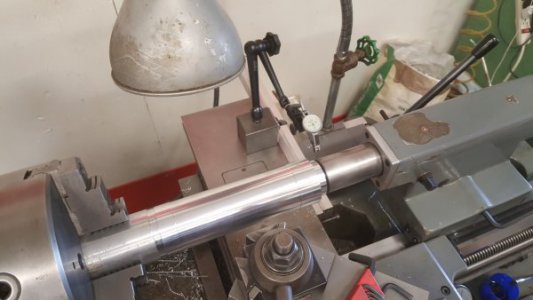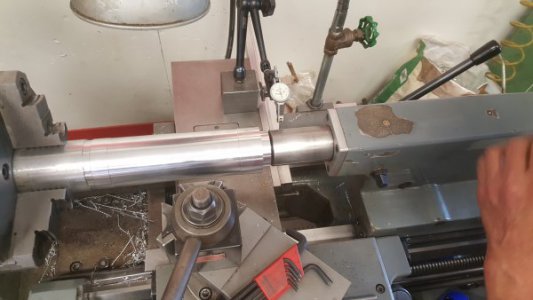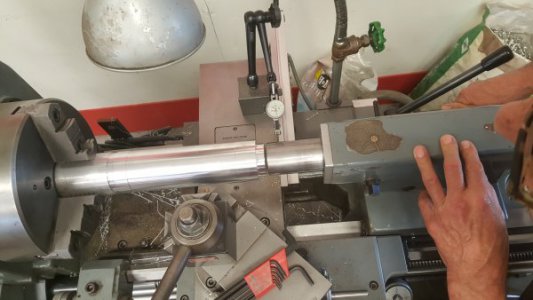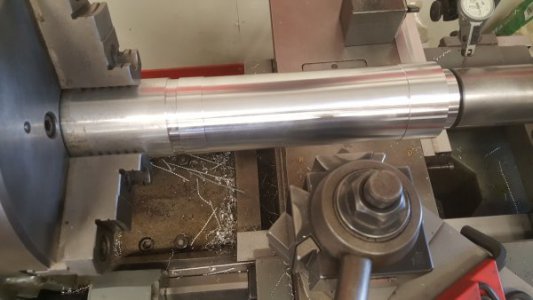-
Welcome back Guest! Did you know you can mentor other members here at H-M? If not, please check out our Relaunch of Hobby Machinist Mentoring Program!
You are using an out of date browser. It may not display this or other websites correctly.
You should upgrade or use an alternative browser.
You should upgrade or use an alternative browser.
My own Grizzly DF-1237G setup/restoration thread
- Thread starter TonyBen
- Start date
- Joined
- Feb 1, 2018
- Messages
- 1,868
Check for shims in between the tailstock half's . Also turn a longer shaft in the headstock 6" . Then you can speak in terms of per 12" by multiplying by 2. When I showed Stefan G during the Stuttgart scraping class how to turn the piece in the chuck. We could not find a longer piece of material. Turning a short stub like you and he does in can give you a false reading as the bedways up close to the chuck are worn the worse. Also if you turn a longer piece in the headstock you can test the direction the head-stock points top and side.
The tailstock .013" is unusual as heck and most of the time they are low and pointing down because the chips wear the front side of the tailstock.
Here is another student showing turning tests.
fast forward to 1 min
The tailstock .013" is unusual as heck and most of the time they are low and pointing down because the chips wear the front side of the tailstock.
Here is another student showing turning tests.
Attachments
Last edited:
Thanks again! Until now I had not yet cleaned the way surfaces under the tailstock. There was a couple of decades of petrified gunk and some fine particulate buildup. I scraped the surfaces with a plastic scraper and hit it with some scotch-brite. Looks like cleaning the bottom took off 0.010" of error. I'm now down to only being 0.003" high.
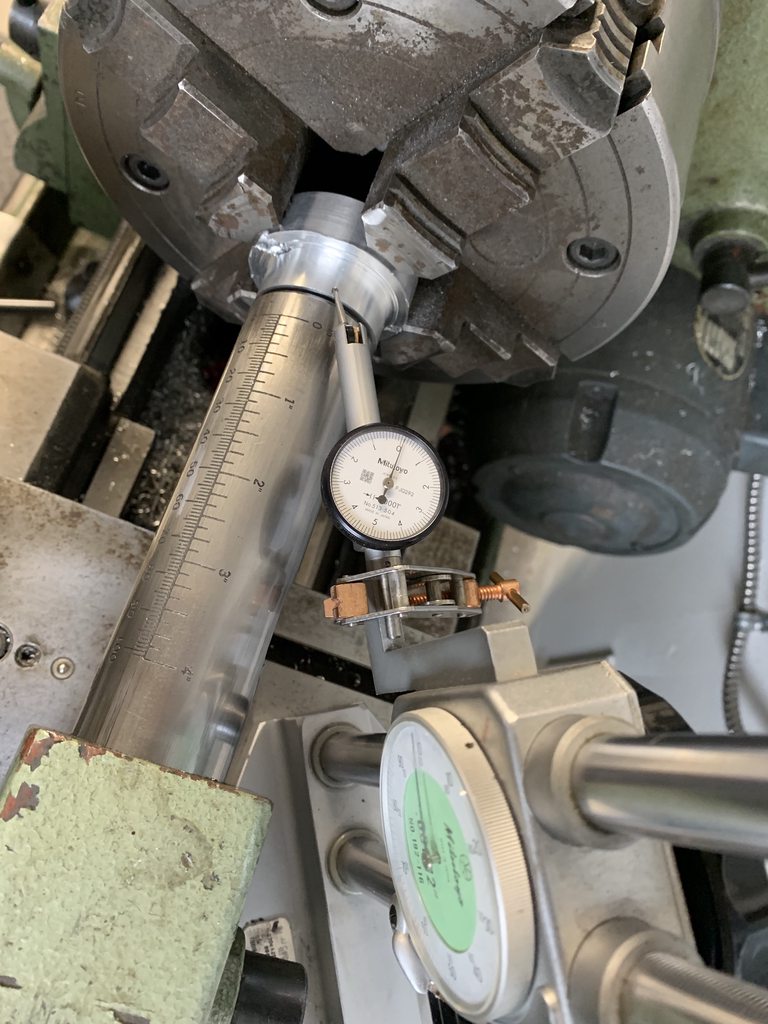
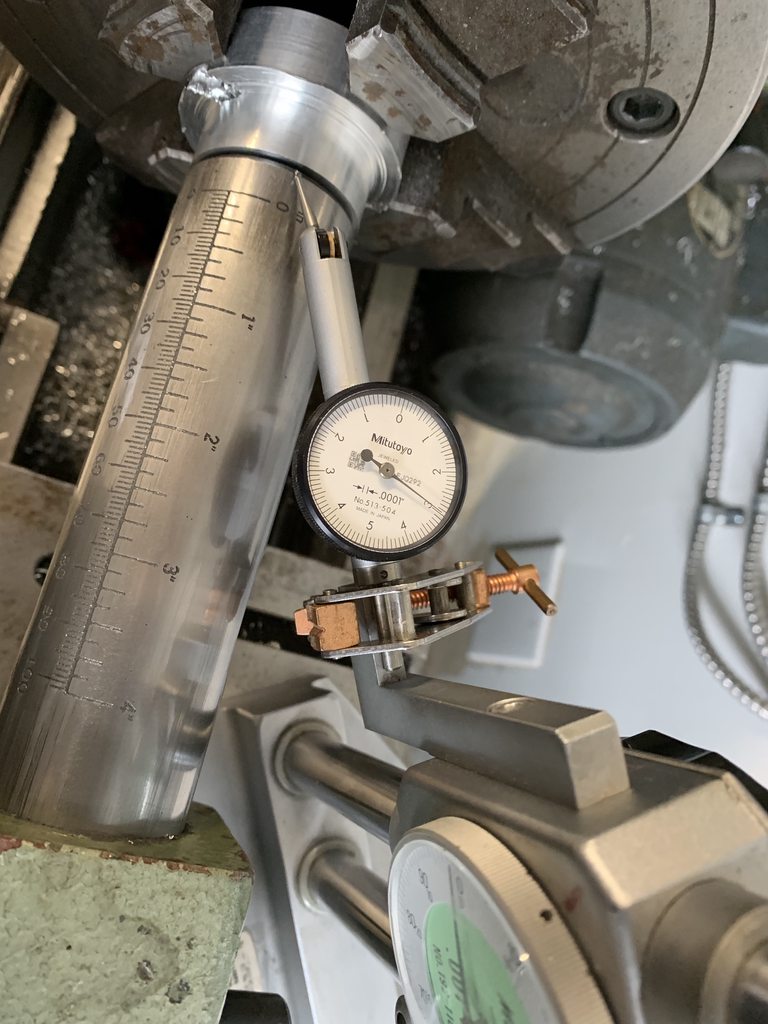
I'll stone the ways a little more and see if I can bring them in closer. I'll also get everything lined up to make sure they are the same diameter.
Tony.


I'll stone the ways a little more and see if I can bring them in closer. I'll also get everything lined up to make sure they are the same diameter.
Tony.
SURPRISE!
I used the dial indicator to center the tailstock and to my surprise, after tightening the levers and the centering set screws, the offset is now down to 0.0005"!!! I also checked the size of the cut and there is a 0.0005" concentricity to it.
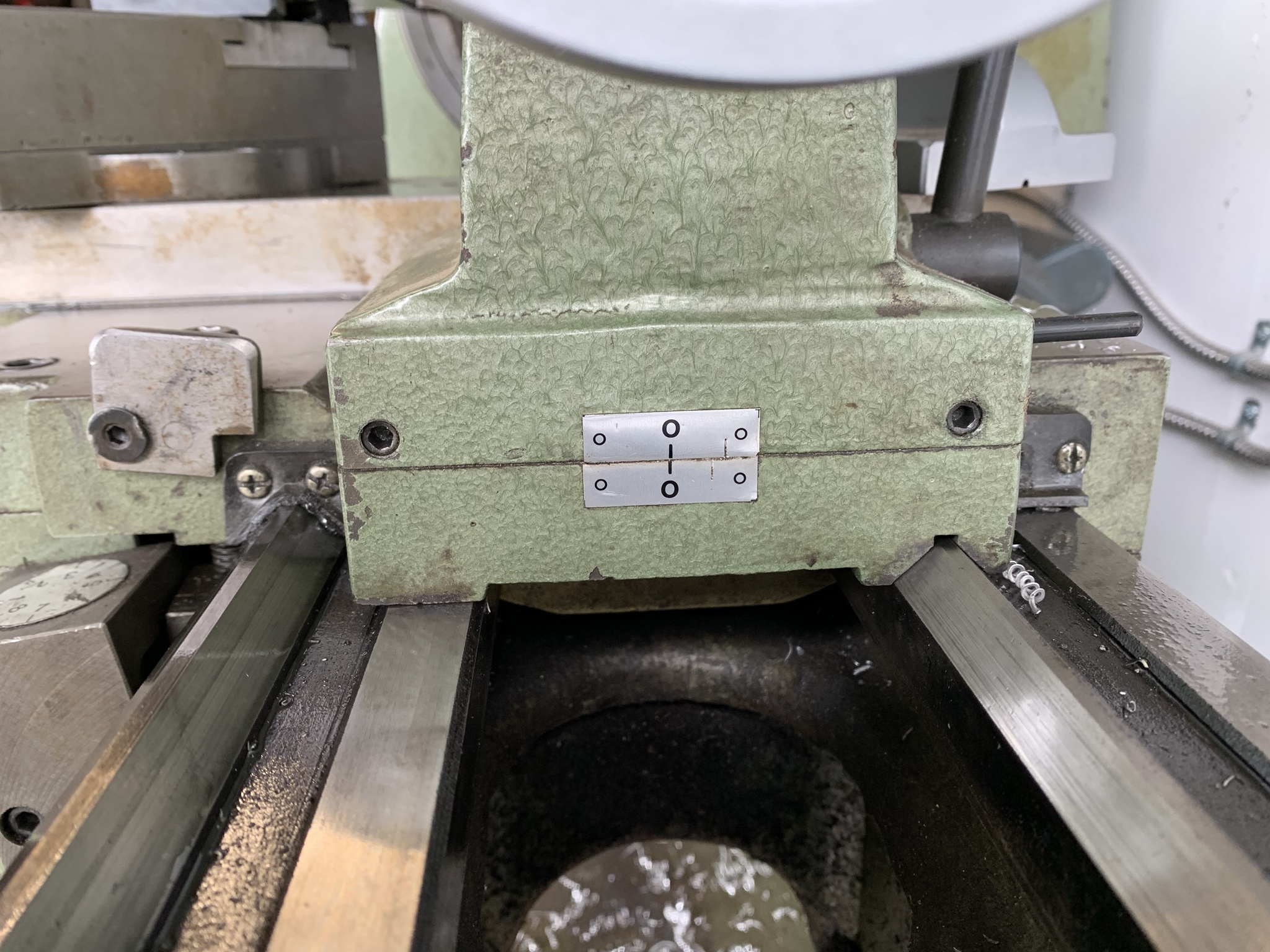
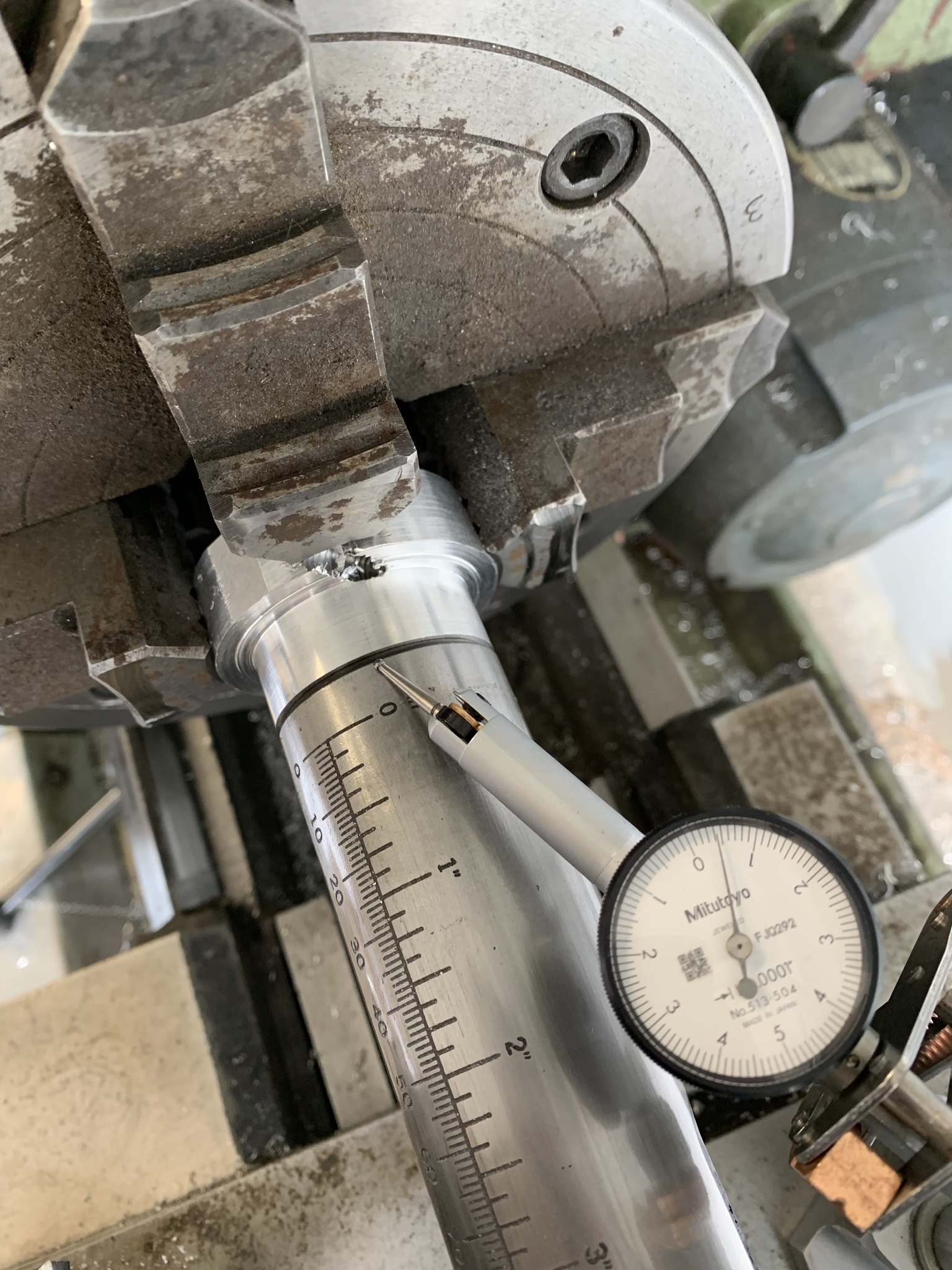
I still haven't checked the side alignment.
Thanks again for all the help!
Tony.
I used the dial indicator to center the tailstock and to my surprise, after tightening the levers and the centering set screws, the offset is now down to 0.0005"!!! I also checked the size of the cut and there is a 0.0005" concentricity to it.


I still haven't checked the side alignment.
Thanks again for all the help!
Tony.
I talked to my machinist at work this morning and he said 0.0005" runout on a fresh cut at the face of the chuck is way too much for him but he said for my purposes, it should be fine. He'd expect it to be under 0.0001" or near zero.
Tony.
Tony.
- Joined
- Nov 23, 2014
- Messages
- 2,606
Boy, sure seems like for hobby stuff that 0.0005" would be close enough. Anything tighter than that practically gets into "the Emperor's New Clothes" realm. Not many of us here working on parts for the space shuttle. Depends on your projects.
Titanium Knurler (pretty sure) did the math on the effective diameter difference when cutting with a vertical offset on the tail stock. It varies based on the diameter, but it's practically im-measureable for a 1" diameter turning.
For example, if you are cutting on center at the head stock and your diameter is 1.000", the radius is naturally 0.500". If your tail stock was 0.0005" higher, then your diameter would be the square root of ( (0.5)^2 + (0.0005)^2 ) or 0.50000025". As my dad would have said, "good enough for the girls we go with".
Bruce
Titanium Knurler (pretty sure) did the math on the effective diameter difference when cutting with a vertical offset on the tail stock. It varies based on the diameter, but it's practically im-measureable for a 1" diameter turning.
For example, if you are cutting on center at the head stock and your diameter is 1.000", the radius is naturally 0.500". If your tail stock was 0.0005" higher, then your diameter would be the square root of ( (0.5)^2 + (0.0005)^2 ) or 0.50000025". As my dad would have said, "good enough for the girls we go with".
Bruce
He’s talking about the runout on the cut I did at the chuck. I cut it down to the tailstock diameter and threw a dial indicator on it. As I turned the chuck by hand, I got a o.0005” runout.Boy, sure seems like for hobby stuff that 0.0005" would be close enough. Anything tighter than that practically gets into "the Emperor's New Clothes" realm. Not many of us here working on parts for the space shuttle. Depends on your projects.
Titanium Knurler (pretty sure) did the math on the effective diameter difference when cutting with a vertical offset on the tail stock. It varies based on the diameter, but it's practically im-measureable for a 1" diameter turning.
For example, if you are cutting on center at the head stock and your diameter is 1.000", the radius is naturally 0.500". If your tail stock was 0.0005" higher, then your diameter would be the square root of ( (0.5)^2 + (0.0005)^2 ) or 0.50000025". As my dad would have said, "good enough for the girls we go with".
Bruce
I probably should lock the cross slide and try again.
Tony.
I went back over lunch and locked the cross slide. I got the runout down to maybe 0.0002", but that could be from a sloppy cut on my part. I'm not experienced enough yet to make a clean cut. I'm sure my cutter angle and feed rate are all wrong.
Thanks to all who have helped!
Tony.
Thanks to all who have helped!
Tony.


